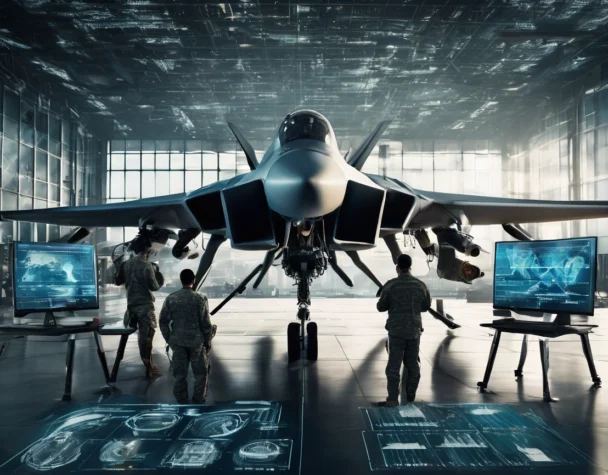
Strategic Choices: Picking ETFs in Defense Sector
Fri, March 07, 2025The defense sector, with its robust blend of innovation and necessity, presents a unique opportunity for investors looking to diversify their portfolios and capitalize on global defense spending. Exchange-Traded Funds (ETFs) in this sector offer a way to invest in a broad range of companies involved in the development, manufacturing, and sales of military goods and services. Understanding how to evaluate these ETFs and strategize investments is crucial in maximizing returns and managing risk in a field that is directly influenced by geopolitical stability and government budgets.
Evaluating ETFs in the Defense Sector
When considering ETFs in the defense sector, it’s essential to start by analyzing the fund’s composition. Look at the top holdings included in the ETF to ensure they align with reputable companies that have a strong track record in the defense industry. Companies like Lockheed Martin, Raytheon, and Northrop Grumman often form the backbone of many defense ETFs and are pivotal in assessing the fund’s potential performance. Additionally, understanding the geographical diversification of these holdings is crucial, as it can impact the fund’s volatility and exposure to global political and economic risks.
The second step in evaluating defense ETFs is examining the fund’s performance history against market benchmarks and other sector ETFs. This includes looking at key metrics such as the annual return rate, expense ratio, and volatility. A lower expense ratio can be particularly attractive as it directly enhances net returns on investment. Comparing these metrics helps in assessing whether the ETF is outperforming its peers and meeting its stated objectives, which is indicative of effective management and strategy execution.
Lastly, potential investors should consider the liquidity of the ETF. Defense sector ETFs can vary significantly in terms of trading volume, which affects the ease with which shares can be bought or sold in the market without impacting the price too much. Higher liquidity generally means lower trading costs and less price manipulation, making the ETF more attractive to investors who may need to adjust their portfolio quickly in response to changing economic or geopolitical conditions.
Optimal Strategies for Defense Investments
Adopting a long-term perspective is generally recommended when investing in defense ETFs. The defense sector’s growth is often cyclical, tied closely to governmental defense budgets and geopolitical tensions, which do not change overnight. Long-term investments can iron out volatility and yield considerable gains as nations consistently upgrade their defense capabilities. Investors should position themselves to capitalize on these slow but steady trends rather than seeking quick profits from sudden geopolitical events.
Diversification within the defense sector is another strategic consideration. While it might be tempting to concentrate investments in a single, well-performing ETF, spreading investments across different funds can reduce risk. Some ETFs may focus more on traditional weaponry and aircraft, while others could be heavily invested in cybersecurity and drone technology. Balancing a portfolio across these sub-sectors can hedge against losses if one area experiences a downturn.
Finally, staying informed about global political and military trends is imperative for anyone investing in defense ETFs. Shifts in international relations, changes in government defense policies, and innovations in military technology can all significantly affect the sector’s performance. Investors who keep a keen eye on these trends can adjust their investment strategies proactively, positioning themselves to take advantage of new opportunities as they arise or pulling back when potential downturns loom.
Investing in defense sector ETFs offers a compelling avenue for portfolio growth, especially for those who navigate the complexities of the market with a strategic approach. Evaluating these ETFs thoroughly before investing and employing a well-thought-out investment strategy can lead to significant returns. As with any investment, the keys to success lie in diligent research, strategic diversification, and a keen understanding of the sector’s driving forces. For those prepared to delve deep and stay informed, the defense sector provides a fertile ground for growing and protecting investment value in a world where security needs continually evolve.

